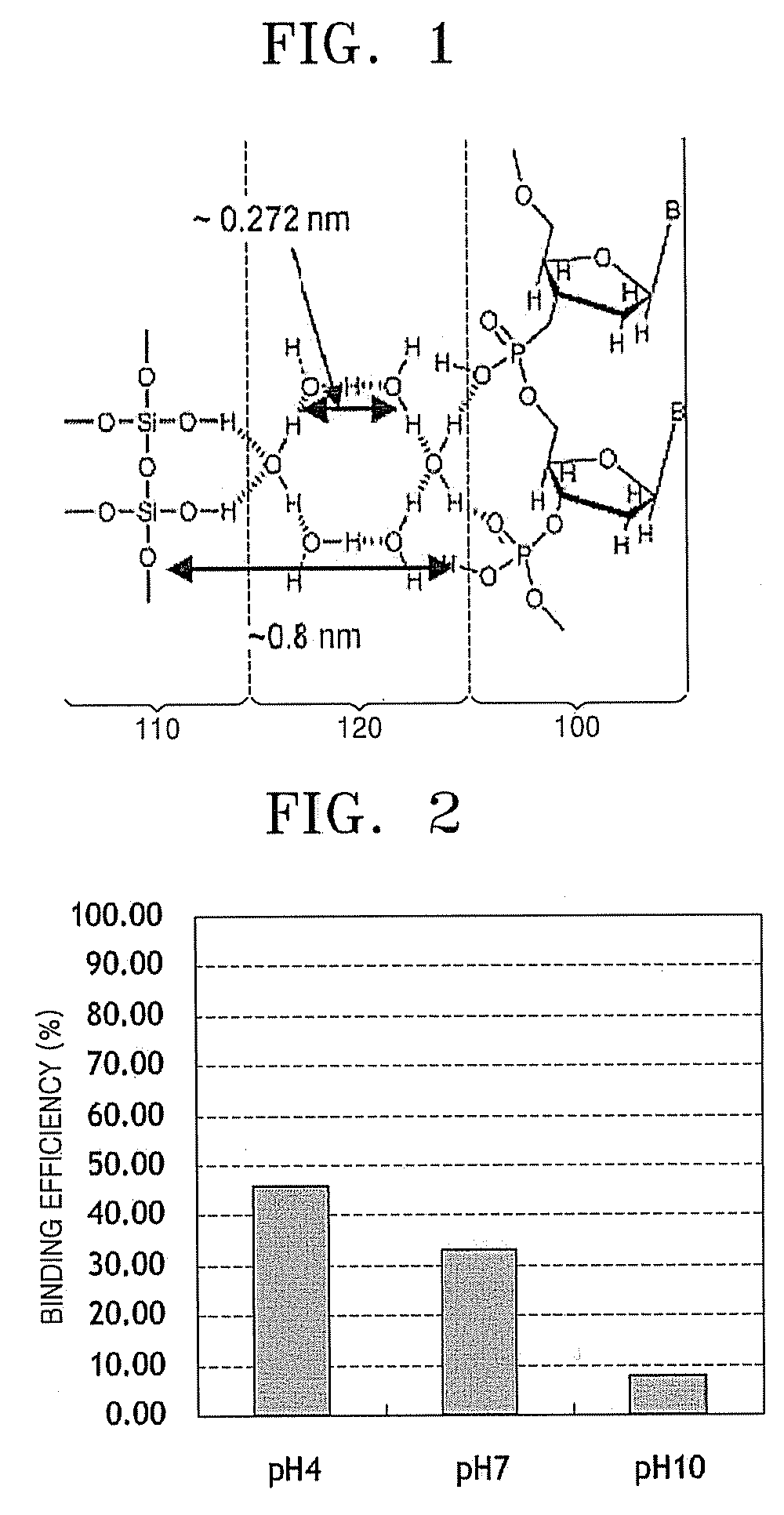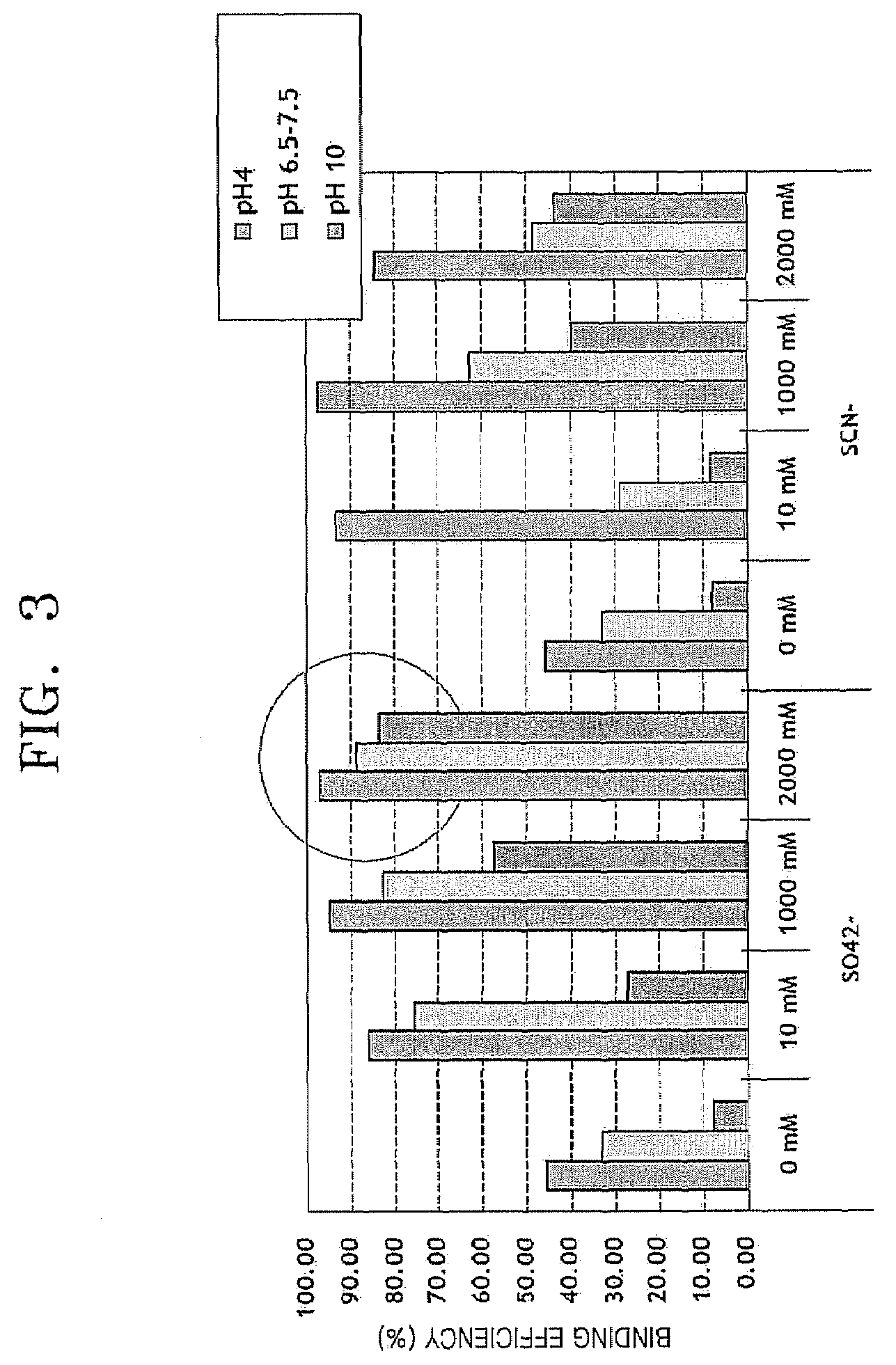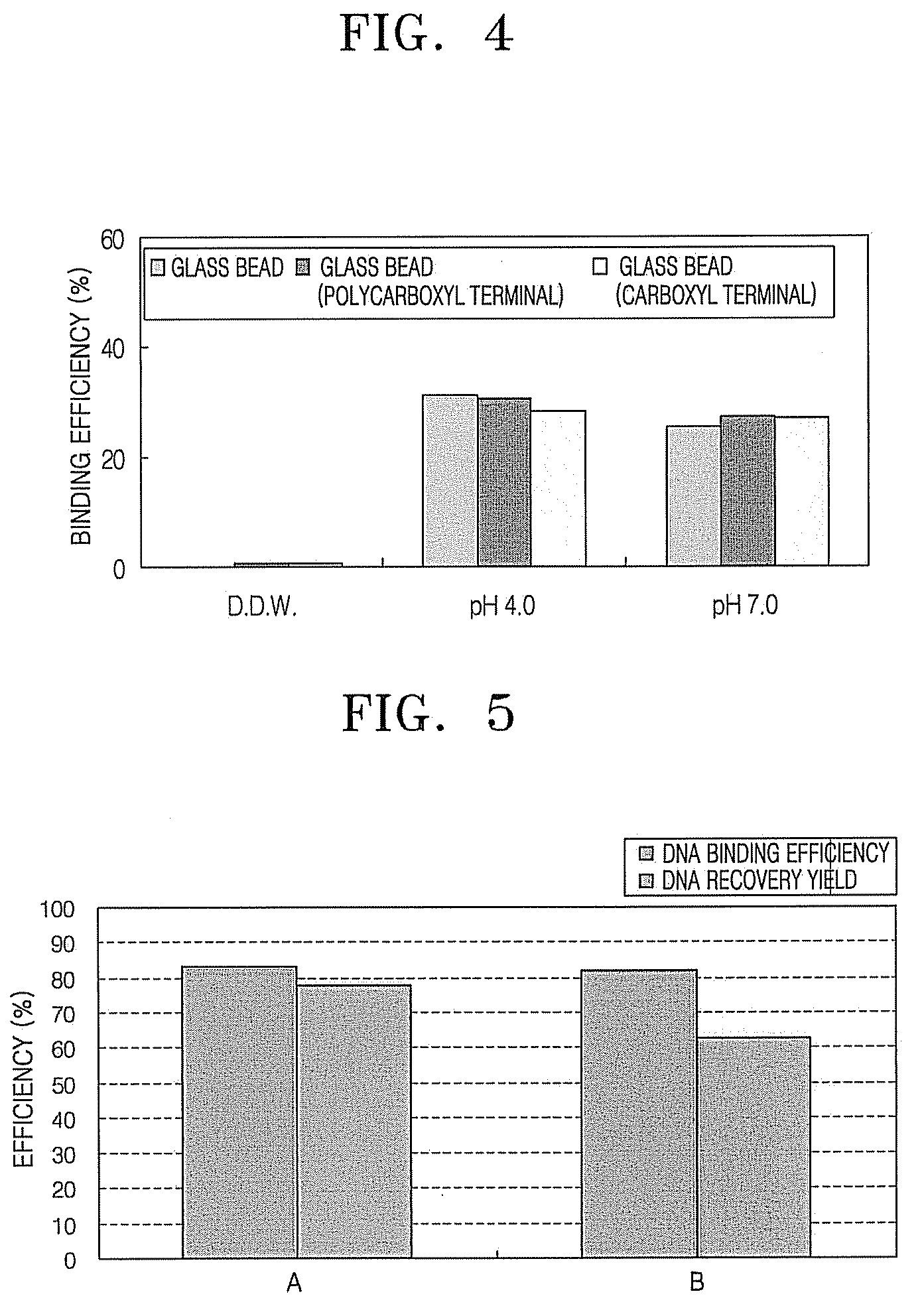Method and apparatus for purifying nucleic acid on hydrophilic surface of solid support using hydrogen bonding
a technology of hydrophilic surface and solid support, which is applied in the direction of biomass after-treatment, organic chemistry, specific use bioreactor/fermenter, etc., can solve the problems of chaotropic material use, time-consuming and complicated, and inconvenient us
- Summary
- Abstract
- Description
- Claims
- Application Information
AI Technical Summary
Problems solved by technology
Method used
Image
Examples
example 1
Nucleic Acid Binding Efficiency using the Method According to an Embodiment
[0055]Binding efficiency of nucleic acid using the method according to an embodiment was determined. The experiment was performed in the same manner as in Comparative Example 1, except that SO42− was used as a kosmotropic salt, SCN− was used as a chaotropic salt, and 0, 10, 1,000, and 2,000 mM of SO42− and SCN−, respectively were used, and nucleic acid binding was performed at pH 4, 6.5-7.5, and 10.
[0056]FIG. 3 is a graph showing binding efficiency of E. coli gDNA according to pH and concentration of a kosmotropic salt or chaotropic salt. In FIG. 3, the left panel represents results of measuring binding efficiency of E. coli gDNA using SO42− as a kosmotropic salt, and the right panel represents results of measuring binding efficiency of E. coli gDNA using SCN− as a chaotropic salt. As can be seen in FIG. 3, generally, the nucleic acid binding efficiency is the highest at pH 4, and the nucleic acid binding eff...
example 2
Binding Efficiency of Nucleic Acid According to Substrate Surface Types
[0059]Binding efficiency of nucleic acid according to different types of a substrate surface was determined. The substrates used included a glass bead, a glass bead having polycarboxyl terminal groups, or a glass bead having carboxyl terminal groups. The experiment was performed in the same manner as in Comparative Example 1, except that 1 M of sodium sulfate (pH 4, pH 7) was used as a kosmotropic salt, and E. coli gDNA 1.515 ng was used as nucleic acid.
[0060]FIG. 4 is a graph showing binding efficiency of E. coli gDNA according to types of a substrate surface. In FIG. 4, results represented by DDW refer to results when distilled water was used in the absence of a kosmotropic salt, and results at pH 4.0 and pH 7.0 refer to results when 1 M of sodium sulfate as a kosmotropic salt was added. As can be seen in FIG. 4, while binding efficiency of nucleic acid is very low when a kosmotropic salt is not added, binding ...
example 3
Eluting Efficiency of Nucleic Acid using the Method According to an Embodiment
[0062]Eluting efficiency of nucleic acid that was bound to a substrate using the method according to an embodiment was determined. The experiment was performed in the same manner as in Comparative Example 1, except that a silica chip having a pillar structure was used as a substrate, 2M of sodium sulfate (pH 4) was used as a kosmotropic salt, E. coli gDNA 1,377 ng was used as nucleic acid, and 10 mM of Tris-HCl (pH 9) was used as a nucleic acid eluting buffer. The nucleic acid eluting buffer has a similar composition to that of a general PCR buffer. Binding efficiency and eluting efficiency of nucleic acid was compared using a Qiagen solution as a control group.
[0063]FIG. 5 is a graph showing binding efficiency and eluting efficiency of E. coli gDNA using a kosmotropic salt. In FIG. 5, A refers to when SO42− is used as a kosmotropic salt, and B refers to when a Qiagen solution is used as a control group. A...
PUM
| Property | Measurement | Unit |
|---|---|---|
| Molar density | aaaaa | aaaaa |
| Molar density | aaaaa | aaaaa |
| Acidity | aaaaa | aaaaa |
Abstract
Description
Claims
Application Information
 Login to View More
Login to View More - R&D
- Intellectual Property
- Life Sciences
- Materials
- Tech Scout
- Unparalleled Data Quality
- Higher Quality Content
- 60% Fewer Hallucinations
Browse by: Latest US Patents, China's latest patents, Technical Efficacy Thesaurus, Application Domain, Technology Topic, Popular Technical Reports.
© 2025 PatSnap. All rights reserved.Legal|Privacy policy|Modern Slavery Act Transparency Statement|Sitemap|About US| Contact US: help@patsnap.com



